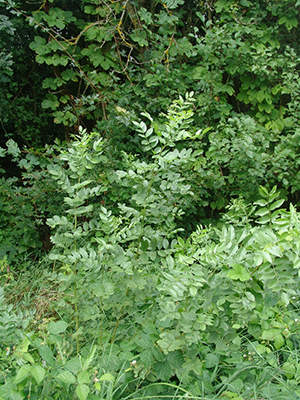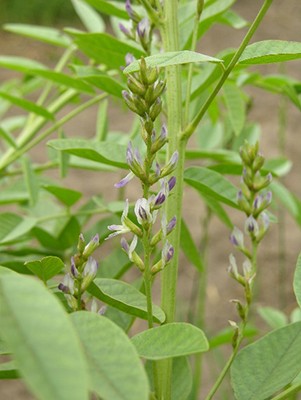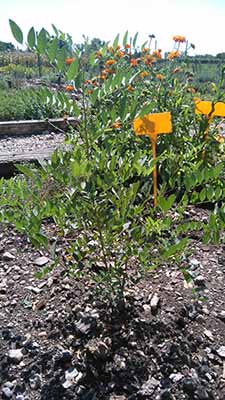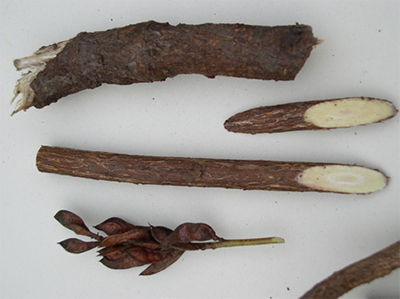Glycyrrhiza glabra L. (Fabaceae)





| ENG | licorice, liquorice |
| SK | sladkovka hladkoplodá, sladké drievko hladkoplodé |
| CZ | lékořice lysá |
| PL | lukrecja gładka |
| HU | édesgyökér |
Using
Licorice is a medicinal plant. Roots and rootstocks are frequently used in pharmacy and food technology because they contain large amounts of glycyrrhizin, an oleanane-type triterpene saponin, which is considered the main active constituent and a well-recognized natural sweetener. Licorice contains vitamin C, niacin, sodium, potassium, magnesium, and calcium. In traditional medicine Licorice root is a used mainly for the treatment of peptic ulcer, hepatitis C, and pulmonary and skin diseases, although clinical and experimental studies suggest that it has several other useful pharmacological properties such as anti-inflammatory, antiviral, antimicrobial, antioxidative, anticancer activities, immunomodulatory, hepatoprotective and cardioprotective effects.
| I. | II. | III. | IV. | V. | VI. | VII. | VIII. | IX. | X. | XI. | XII. | |||||||||||||
| Propagation/ Vegetative | ||||||||||||||||||||||||
| Harvest / Radix | ||||||||||||||||||||||||
Botanical description and occurrence:
Licorice is a perennial plant with erect and grooved stems (1-1.5 m), and alternate, compound, imparipinnate leaves with 5-7 pairs of leaflets. The inflorescences are erect racemes composed of more or less dark lilac-coloured flowers. The fruit is small flattened pod (15-25 mm) constricted between the seeds.
The seeds have low germination and therefore is liquorice propagated mainly vegetatively from root and rhizomes cuttings.
Why to have the plant in your garden:
The dried root and rhizomes of licorice, whole or cut, and peeled or not currently have many uses, chiefly in pharmacy and food technology. Licorice is an essential ingredient of the Chinese five-spice blend, which is used in sauces and barbecues. It is also used in soft drinks (Kofola), ice cream, candy, smoothies, drinks, and beer. In Europe licorice is used in cough syrups, confectionaries, and lozenges. It also masks bitterness in medicines. Licorice can be a no caloric sweetener but must be used at very low amounts in food so it does not impart a licorice taste. The root has about 20% to 30% of water-soluble extractive and 4% of a glycoside (glycyrrhizin), which is fifty times sweeter than sugar.
Text:
Ing. Jarmila Neugebauerová, Ph.D.

